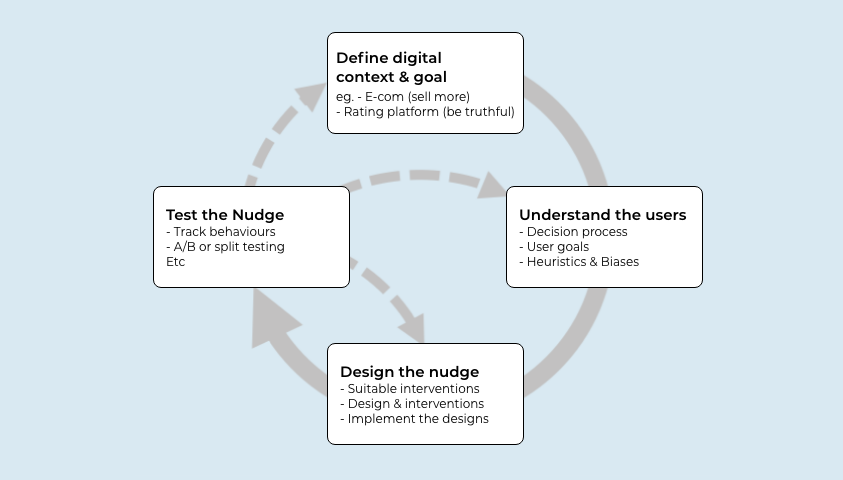- This topic is empty.
-
Topic
-
In user experience (UX) design there is a concept that harnesses the principles of behavioral economics – nudge theory. Pioneered by Richard Thaler and Cass Sunstein, nudge theory posits that subtle design interventions can significantly influence human behavior and decision-making without restricting freedom of choice.
Understanding Nudge Theory
At its core, nudge theory recognizes that individuals are not always perfectly rational actors. Instead, our decisions are often shaped by cognitive biases, heuristics, and the way choices are presented to us. Nudges are design elements that gently guide users towards desired actions, while still preserving their autonomy.These nudges can take many forms, from default settings that encourage a particular choice to visual cues that draw attention to specific options. The key is that they are low-cost, easy to avoid, and ultimately empower users to make better decisions aligned with their own goals and values.
Applying Nudge Theory in UX Design
Nudge theory has become a powerful tool for creating user experiences that are not only intuitive but also influence behavior in positive ways. By understanding the cognitive biases and decision-making processes of their users, designers can strategically incorporate nudges to:
- Improve User Engagement: Nudges can be used to encourage users to complete tasks, explore new features, or engage more deeply with a product or service. For example, progress bars or visual cues that highlight the next steps in a user journey can nudge users towards completion.
- Promote Healthy Habits: Nudges can be employed to support users in developing beneficial habits, such as saving money, exercising regularly, or making sustainable choices. Defaults, reminders, and social proof can all be leveraged to nudge users towards healthier behaviors.
- Enhance Decision-Making: By presenting information and options in a thoughtful manner, designers can use nudges to help users make more informed and beneficial decisions. This could include highlighting the potential consequences of choices or making the most desirable option the most prominent.
- Foster Trust and Transparency: Nudges can also be used to build trust and transparency with users. For example, clear and concise language, visual cues that explain the reasoning behind design choices, and opportunities for user control can all contribute to a more trustworthy user experience.
Ethical Considerations
While the power of nudge theory in UX design is undeniable, it is crucial that designers wield this influence responsibly and ethically. Nudges should never be used to manipulate users or steer them towards decisions that primarily benefit the organization rather than the user.To ensure ethical implementation, designers should prioritize user needs, be transparent about the use of nudges, and provide users with the ability to easily opt-out of any nudges they find undesirable. By striking the right balance between persuasion and user autonomy, designers can harness the power of nudge theory to create experiences that truly empower and benefit their users.
Nudge theory offers designers a toolkit for shaping user behavior and decision-making. By understanding the cognitive biases and heuristics that influence our choices, designers can incorporate nudges to create user experiences that are intuitive and promote positive outcomes.

- You must be logged in to reply to this topic.
